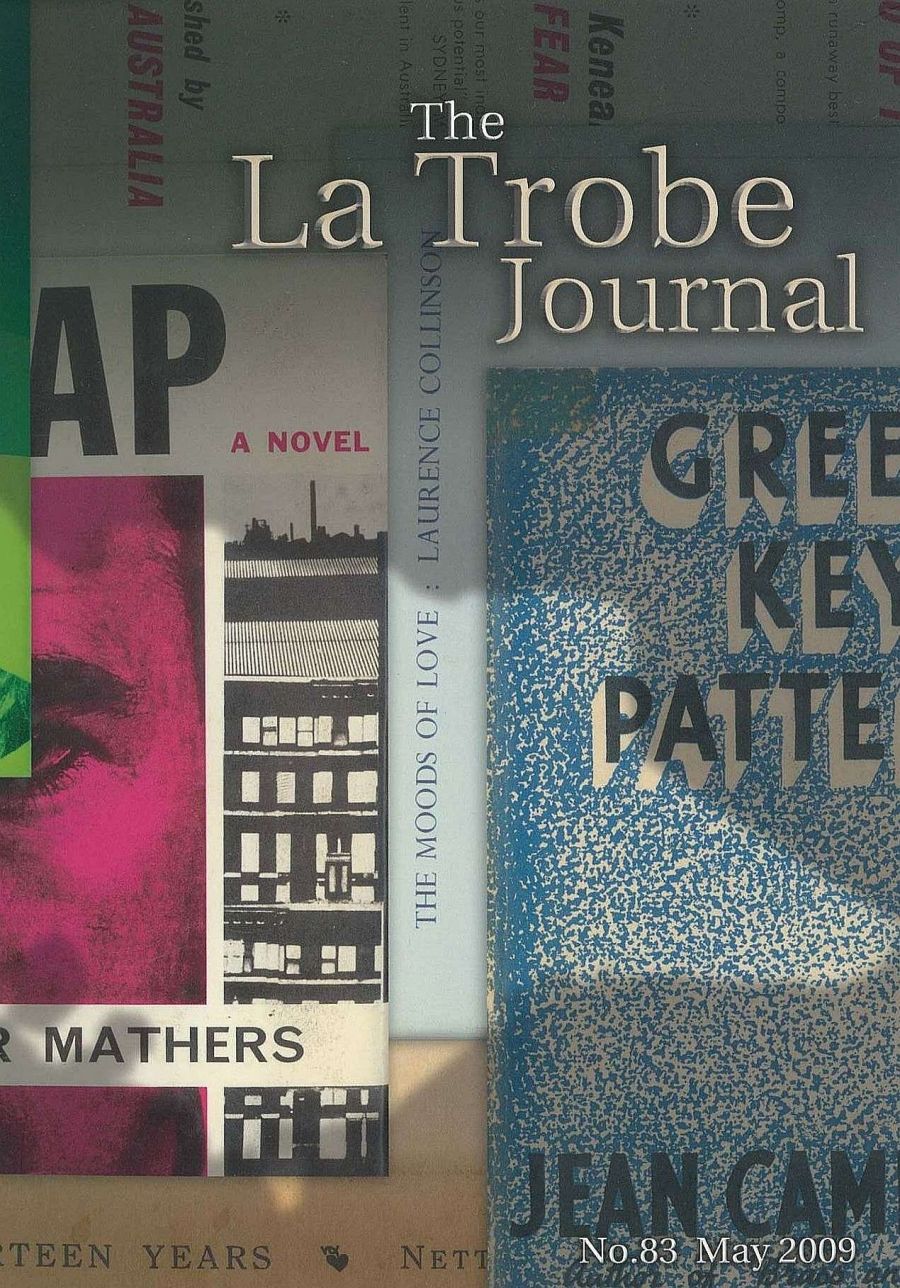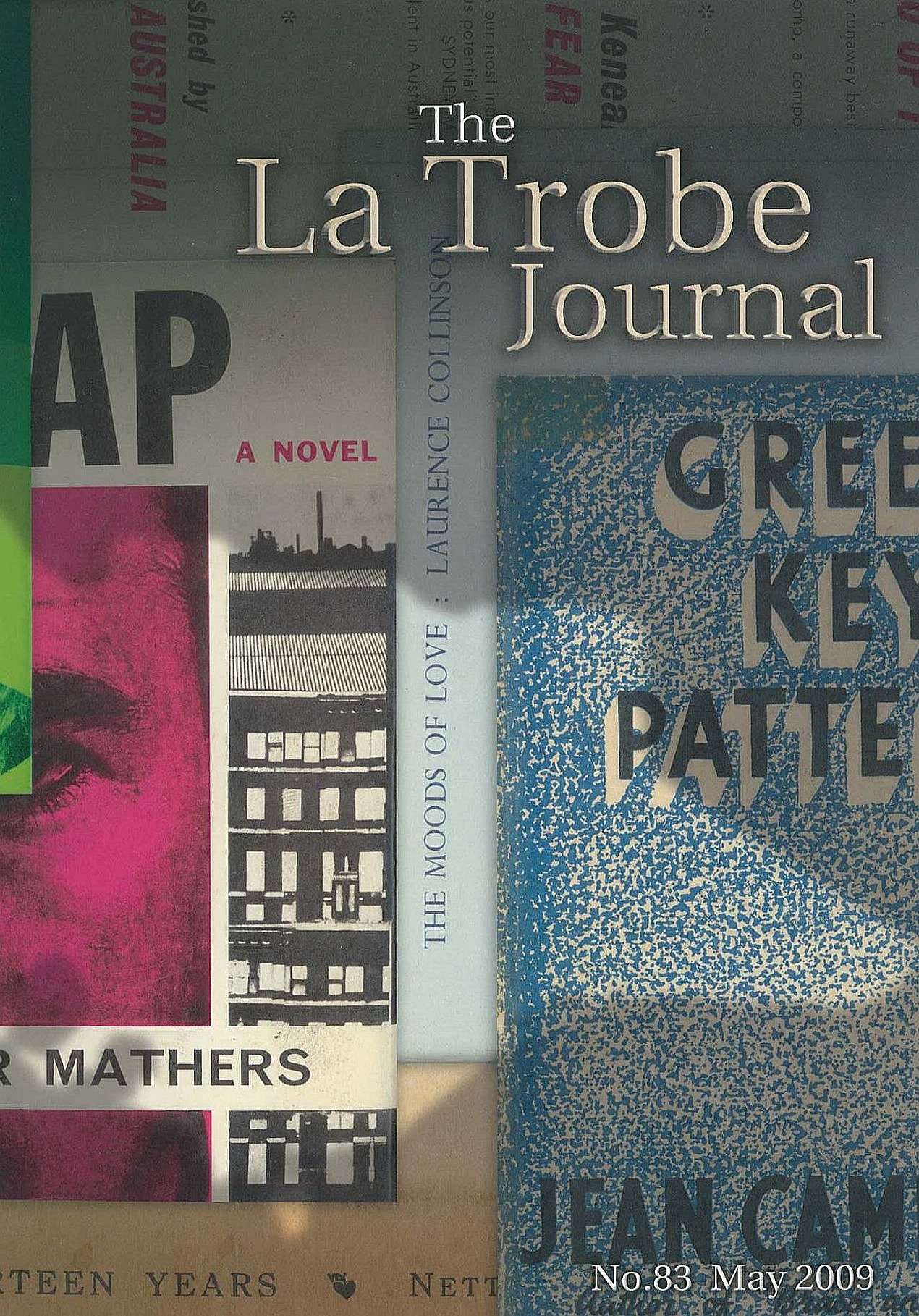
- Free Article: No
- Contents Category: Journal
- Review Article: Yes
- Article Title: Forgotten voices
- Online Only: No
- Custom Highlight Text:
The La Trobe Library Journal began life in 1968 as a modest, even dowdy sixteen-pager produced by the Friends of the (still very new) La Trobe Library. Its purpose was to publicise the Library and its holdings. For the first decade of its existence, the journal was edited by that quiet achiever of Australian letters, Geoffrey Serle. Over the following twenty years it was edited, and largely written, by a succession of librarians, high-lighting not only the riches of the Library’s collections but also the calibre of its staff.
- Book 1 Title: La Trobe Journal, No. 83
- Book 1 Biblio: State Library of Victoria Foundation, $25 pb, 120 pp
- Book 1 Cover Small (400 x 600):

- Book 1 Cover (800 x 1200):

It was a massive commitment for an often cash-strapped institution, and its very existence promoted a conviction that the State Library was a lot more than the sum of its collections; that it could, and should, play a central role in the cultural life of the city. During the 1990s its production values improved and it began to be a vehicle for exploring broader themes in Victorian history and culture: there were special issues on European exploration, Koori history, medieval manuscripts, the great nineteenth-century exhibitions and Australian children’s literature, to name a few.
In 1998 the journal returned to the hands of what by then had become the State Library Foundation, and in the decade since – under the editorship primarily of John Barnes, and now John Arnold – it has grown in range and substance. A key figure in the History of the Book in Australia and the Bibliography of Australian Literature, and author of the definitive account of the Fanfrolico Press, Arnold is a worthy successor to Serle and Barnes. The current issue of the La Trobe Journal sheds new light on famous and forgotten voices in Australian literature, and makes an absorbing study of the role of chance and circumstance in the making of individual reputations and of literary culture as a whole.
Chris Wallace-Crabbe’s meditation ‘Sweet Yarra, Run Softly’ sets the scene for an exploration of Melbourne’s cultural life. ‘It was very pleasing,’ he writes, ‘that my home city had flowered as UNESCO’s World City of Literature: this felt as though I had bet on a horse a fair while back, and it had finally come galloping home.’ If there is a weakness in the volume, it is that none of the other contributors follow Wallace-Crabbe’s cue to explore ethnic diversity. They do, however, range across time from the early colonial period to the present day and revive many faded reputations.
Derham Groves, whose works include a brilliant little book on the influence of television on domestic architecture (TV Houses, 2004), delivers a typically boisterous essay on ‘Crime and Architecture’, exploring the theme of space and place in the works of Conan Doyle, Arthur Upfield and two near-forgotten crime writers, June Wright and S.H. Courtier. Groves’s brief, insightful studies should inspire more detailed critical scrutiny of Wright and Courtier – and, indeed, Upfield.
Gavin De Lacy charts the careers of three fleetingly successful women writers of the 1930s – Jean Campbell, ‘Capel Boake’, and ‘Georgia Rivers’ – and their complex relationships with agents, editors and publishers. Terence O’Neill’s article on Joan Lindsay sheds light on the origins of Picnic at Hanging Rock, and sets it in the context of her other works, including the hysterical travel spoof Through Darkest Pondelayo.
John Barnes’s autobiographical ‘Remembering the Palmers’, and Robin Lucas’s account of the publication of Nettie Palmer’s Fourteen Years, reveal networks at work, in particular the Palmers’ relationship with Clem and Nina Christesen. Graham Willett gives an account of Laurence Collinson, specifically the veiled homosexuality of his sonnet sequence The Moods of Love. Des Cowley investigates the four-volume ‘Fraser’ copy of Frank Hardy’s Power without Glory, finding some evidence that it may be the sole survivor of a small clandestine edition that pre-dated the official publication in August 1950. Peter Pierce tracks the ups and downs – the ‘Sunshine and Shambles’ – of Peter Mathers’s writing life.
Angus Trumble and Mimi Colligan conclude with shorter pieces on colonial topics. Trumble’s account of the letter of introduction given by the duchess of Gordon to the McCrae family reveals the ambiguous value of such patronage: Her Grace’s letter made ‘the McCraes’ situation seem stabler than it actually was, Andrew McCrae less incompetent’, and required nothing more of the addressee than common politeness. It also reinforced Georgiana McCrae’s mistaken belief that she could rely on being a beneficiary of the duchess’s will. Colligan’s account of two recently discovered scrapbooks of James Edward Neild, perhaps the most influential theatre critic in nineteenth-century Melbourne, exposes Neild as ‘curmudgeonly and perhaps even pathologically morbid and malicious’, but also shows that he was genuinely committed to ‘improving the state of Melbourne theatre by goading complacent managers and performers to aspire to higher standards’. Colligan’s article stands as a tribute to Neild’s biographer Harold Love, who died in 2007 shortly before these scrapbooks came to light.
This issue of the La Trobe Journal is a must-read for anyone with a serious interest in Australian writing.


Comments powered by CComment